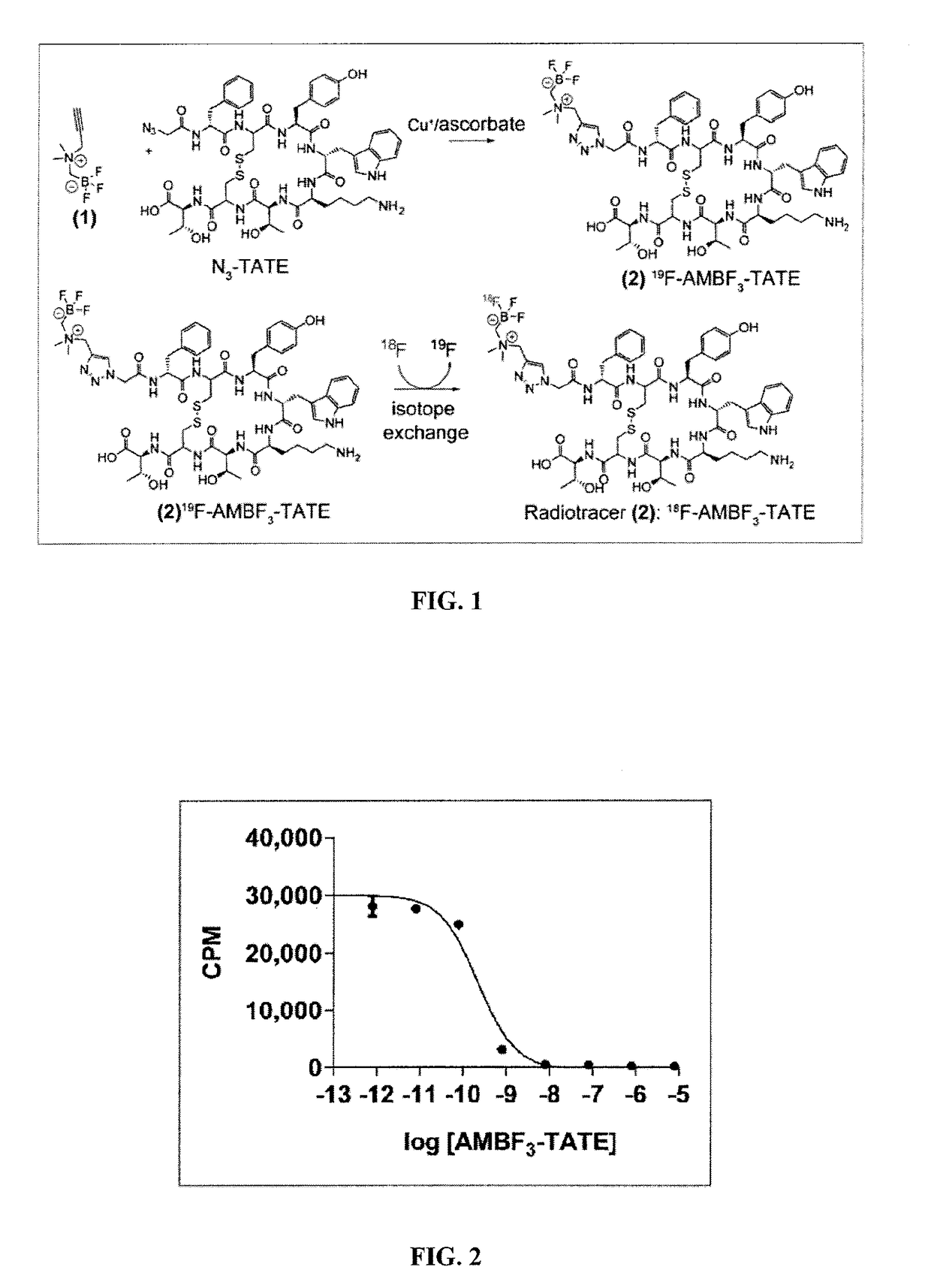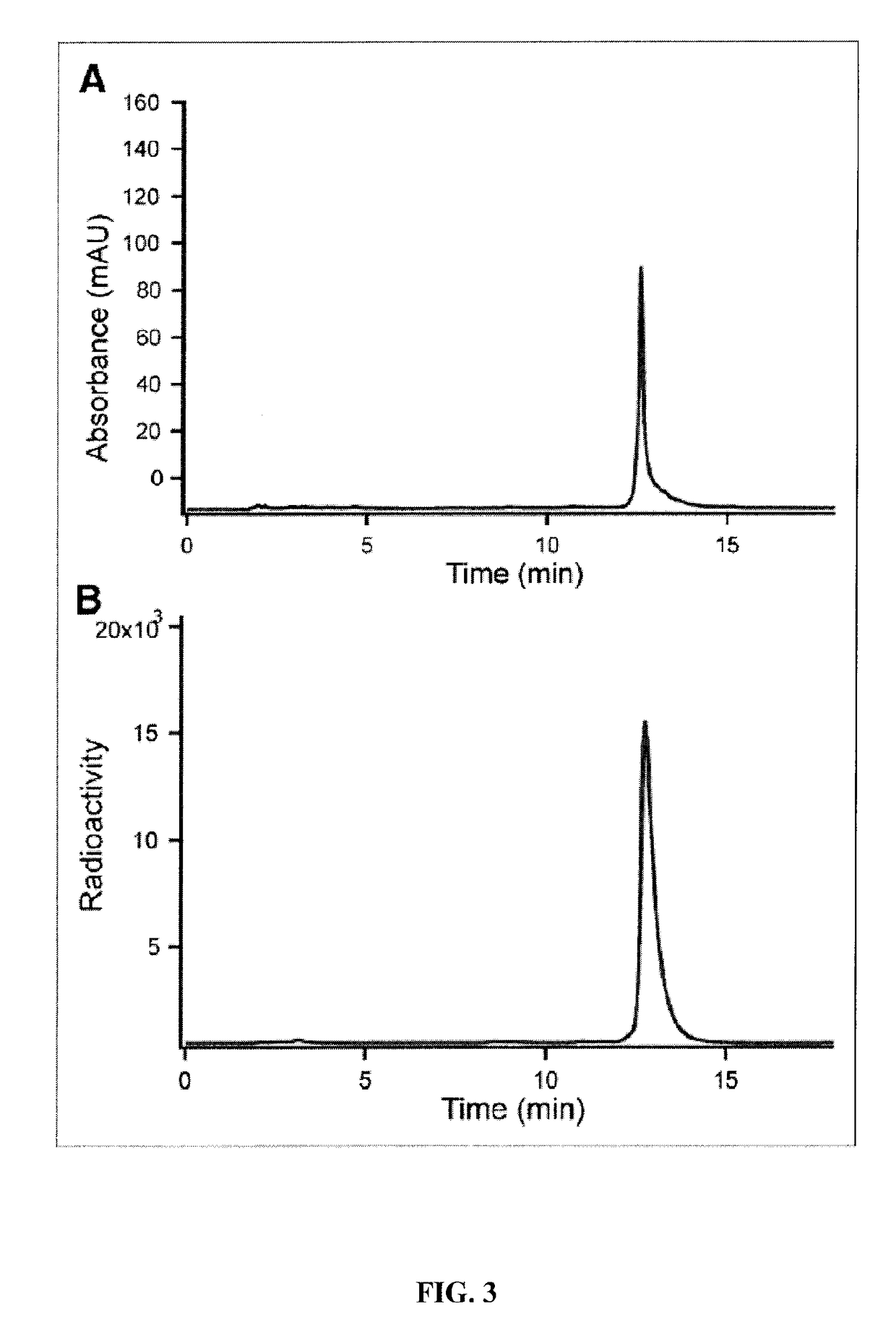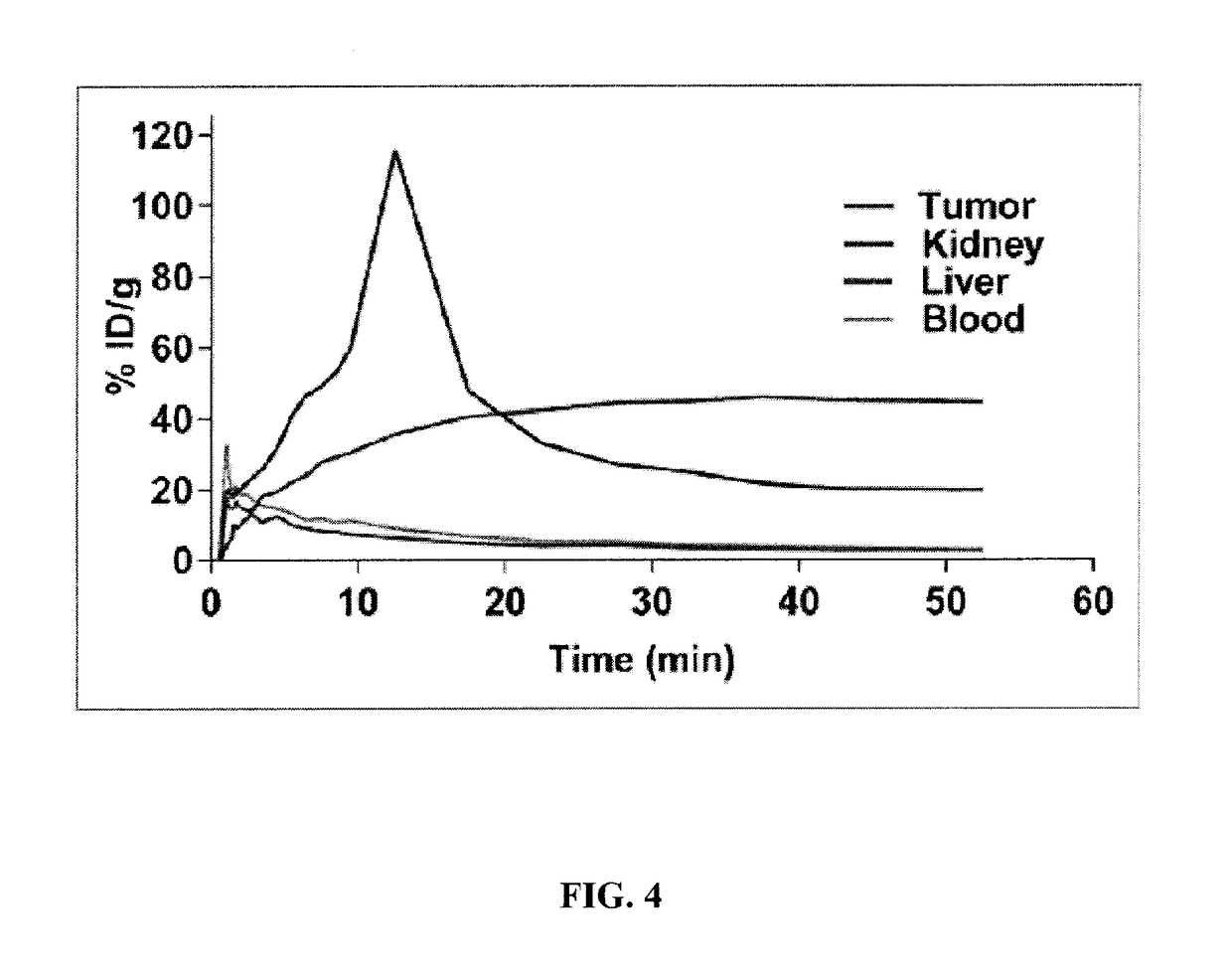Compositions and methods for imaging cancer
a technology of cancer and compounds, applied in the field of radioimaging, can solve the problems of f-fluoride often impede the clinical application of multi-step reactions, the half-life of is relatively short, and the imaging of 68 ga-pets is not widely availabl
- Summary
- Abstract
- Description
- Claims
- Application Information
AI Technical Summary
Problems solved by technology
Method used
Image
Examples
example 1
al Evaluation of a High-Affinity 18F-Trifluoroborate Octreotate Derivative for Somatostatin Receptor Imaging
Materials And Methods
[0139]Reagents and solvents were purchased from Advanced Chemtech, Sigma-Aldrich, Combi-Blocks, or Novabiochem. The AR42J cell line was purchased from ATCC. 18F-fluoride Trap & Release Columns were purchased from ORTG Inc., and C18 Sep-Pak cartridges (1 cm3, 50 mg) were obtained from Waters. An Endeavor 90 peptide synthesizer (Aapptec) was applied to synthesize the peptide. Electron-spray ionization low-resolution mass spectroscopy was performed on a Waters ZQ with a single quadrupole detector, attached to a Waters 2695 high-performance liquid chromatography (HPLC) column. All nuclear MR spectra were recorded at room temperature on a Bruker Avance 300 MHz spectrometer.
[0140]The following HPLC methods were used for purification and quality control. Method A: Agilent Eclipse XDB-C18 5-mm 9.2×250 mm semipreparative column; solvent A, 0.1% trifluoroacetic acid...
example 2
on of Azidoethyl-AMBF3
[0162]Azidoethyl-AMBF3 (compound 5) was prepared as shown generally in Scheme 1:
[0163]
[0164]N,N-dimethyl-2-azidoethylamine 4 (114 mg, 1.0 mmol) was dissolved in anhydrous diethyl ether (5 mL) in a flame-dried round bottom flask. At room temperature, iodomethylboronyl pinacolate (182 μL, 1.0 mmol) was added drop-wise over 5 min. The alkylated product precipitated as a fluffy white powder, which was separated by filtration and dried under vacuum. The pincaolate was then converted to the corresponding trifluoroborate through the addition of KHF2 (3 M, 300 μL in water) and HCl (4M, 300 μL in water) along with deionized water (200 μL) and DMF (600 μL) at 45° C. for 2 hours, and then quenched by NH4OH (conc., 10 μL). Free fluoride was removed by passing the reaction mixture through silica gel to give compound 5. ESI: [M−F]+ calculated: 177.09; obtained: 177.1; HRMS [M+]: calculated: 218.1041. found: 218.1041. Compound 5 was used without further purification for cond...
example 3
Labelling of AMBF3-Bioconjugates
[0165]For labelling, a wet NCA (no carrier added) solution of [18F]fluoride ion was used directly following trapping. Using disposable labware, a very small QMA cartridge (9 mg resin) was affixed to the reaction vessel (10 mL polypropylene conical tube), as shown in FIG. 9. The very small QMA column efficiently traps Curie levels of NCA [18F]fluoride ion, which was directly eluted with 3-bioconjugate to be labelled by isotope exchange (IEX). Once mixed (10 s), the reaction vessel was placed in a heating block at 80° C. After 15 min, the reaction was quenched with 2 mL PBS or 2 mL NH4OH and the entire reaction mixture was directly loaded onto a C18 Sep-Pak column. Following water wash (5 mL) the labelled compound was eluted into PBS / ethanol (2 mL).
PUM
| Property | Measurement | Unit |
|---|---|---|
| temperature | aaaaa | aaaaa |
| pH | aaaaa | aaaaa |
| pH | aaaaa | aaaaa |
Abstract
Description
Claims
Application Information
 Login to View More
Login to View More - R&D
- Intellectual Property
- Life Sciences
- Materials
- Tech Scout
- Unparalleled Data Quality
- Higher Quality Content
- 60% Fewer Hallucinations
Browse by: Latest US Patents, China's latest patents, Technical Efficacy Thesaurus, Application Domain, Technology Topic, Popular Technical Reports.
© 2025 PatSnap. All rights reserved.Legal|Privacy policy|Modern Slavery Act Transparency Statement|Sitemap|About US| Contact US: help@patsnap.com



